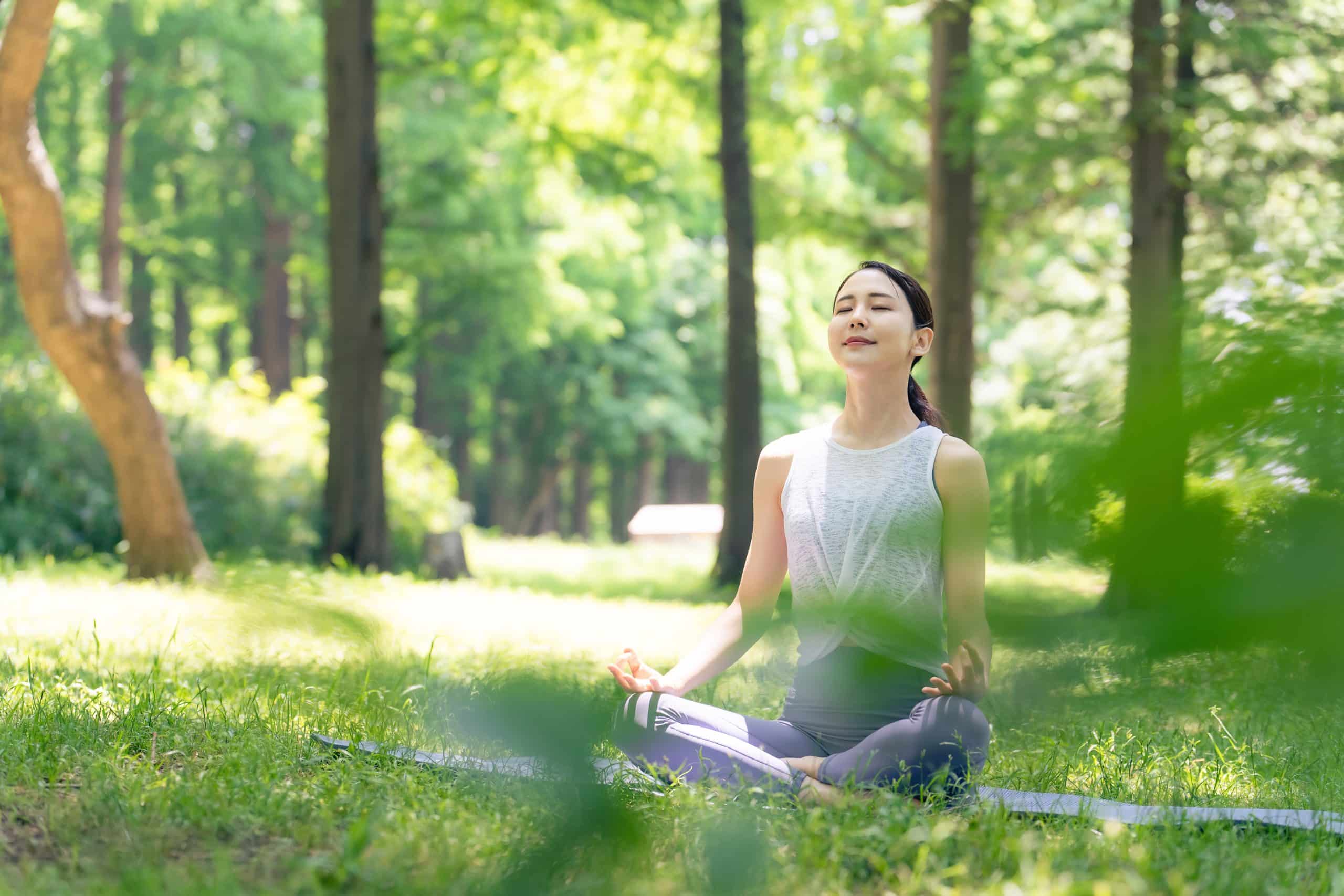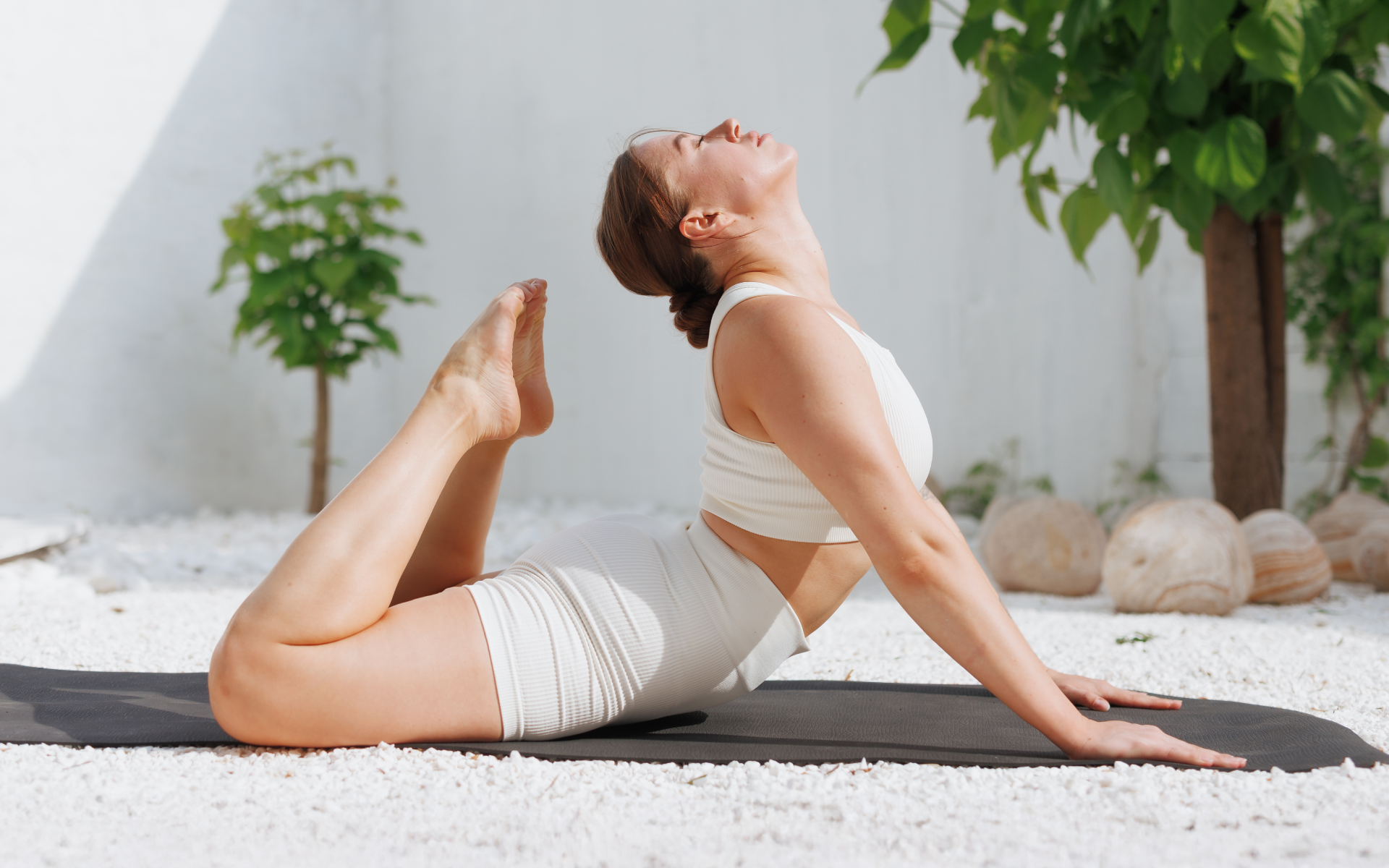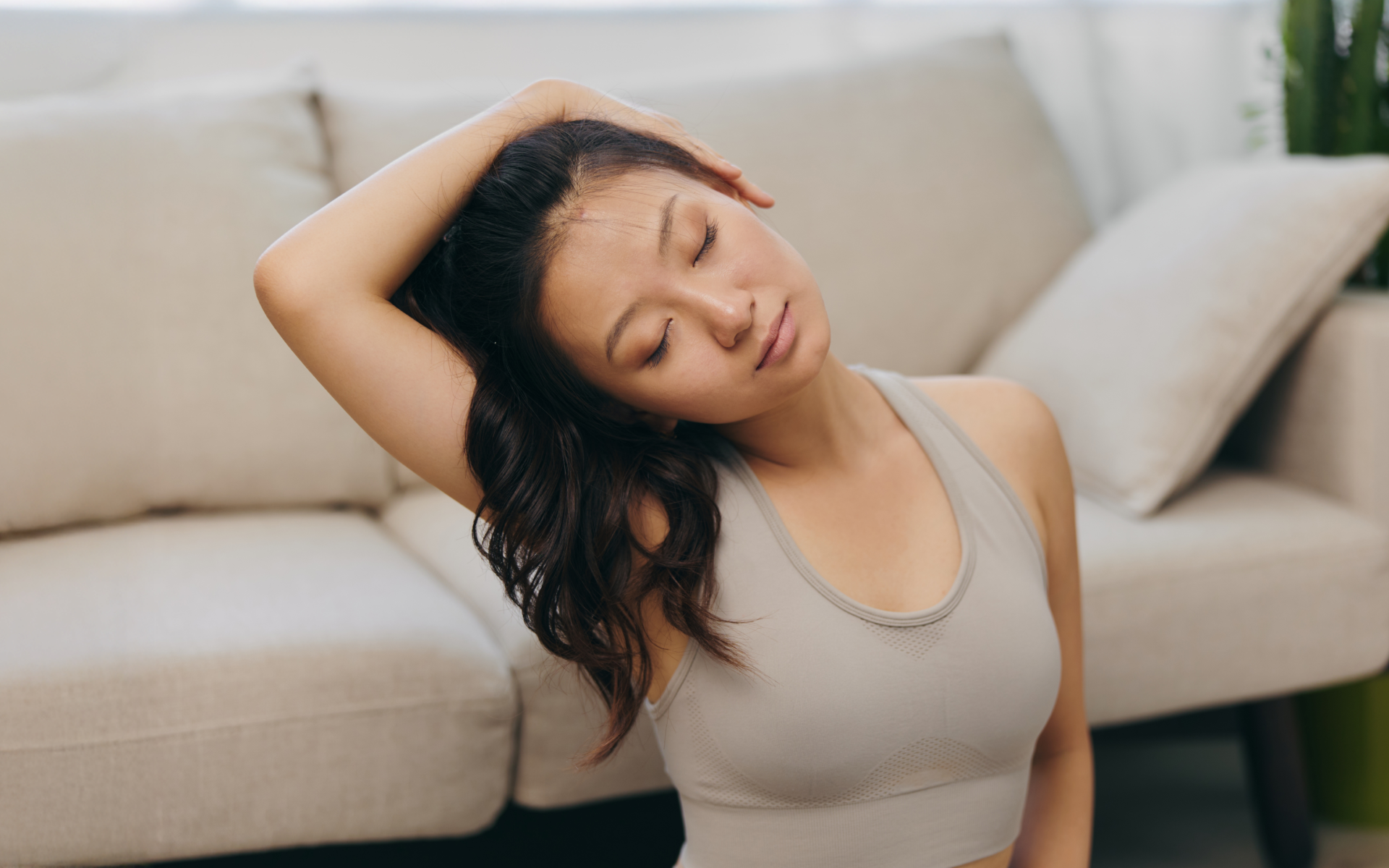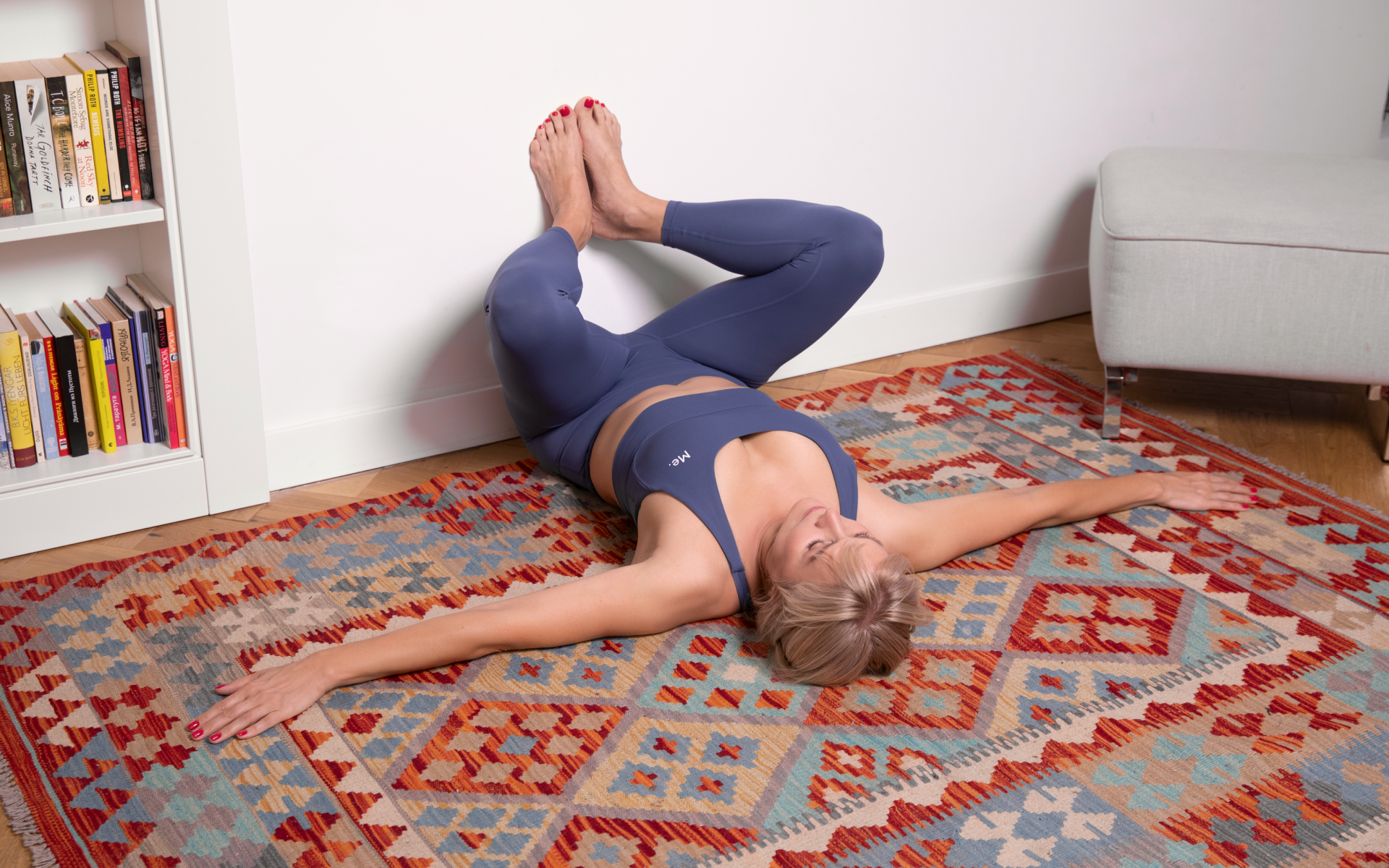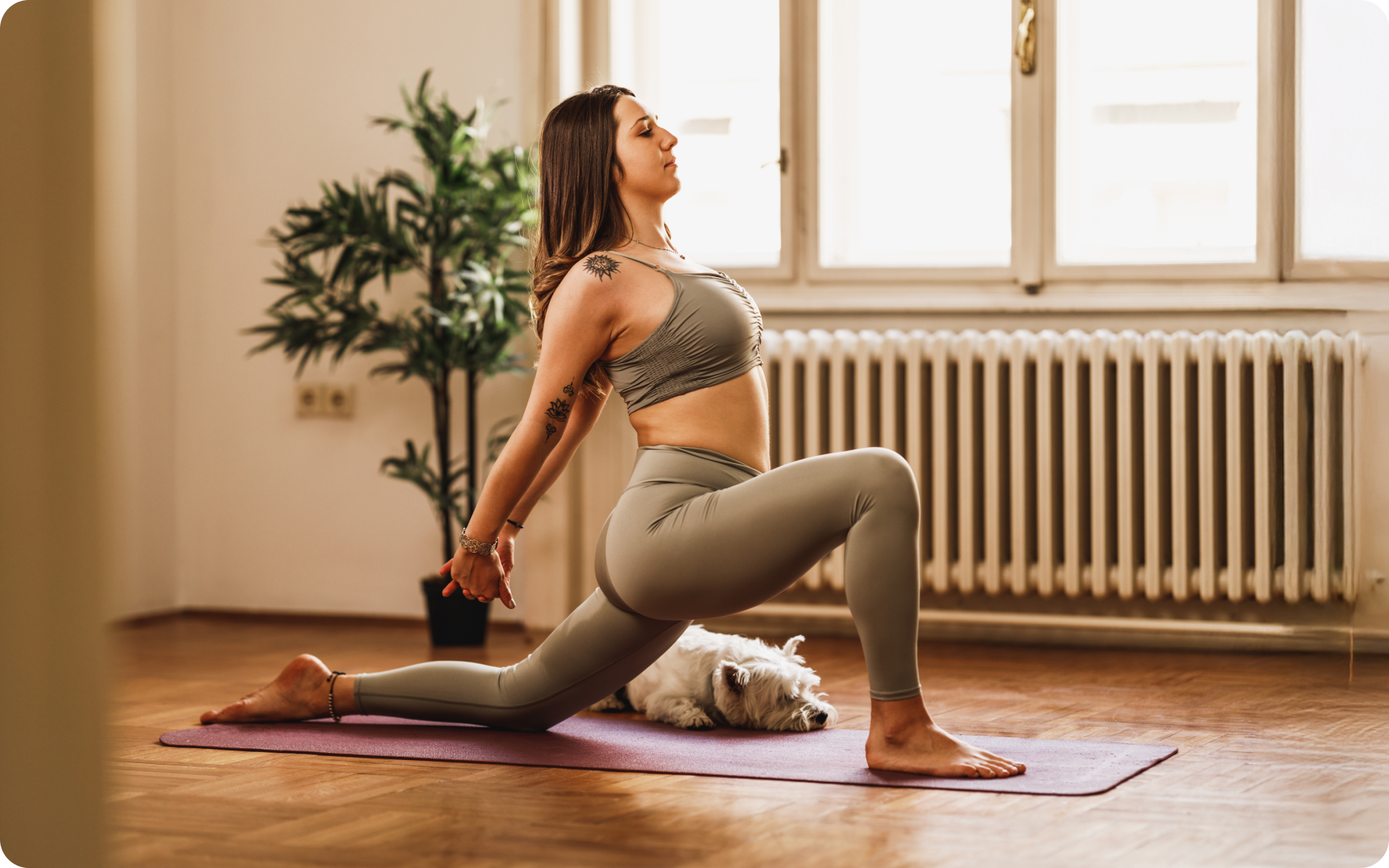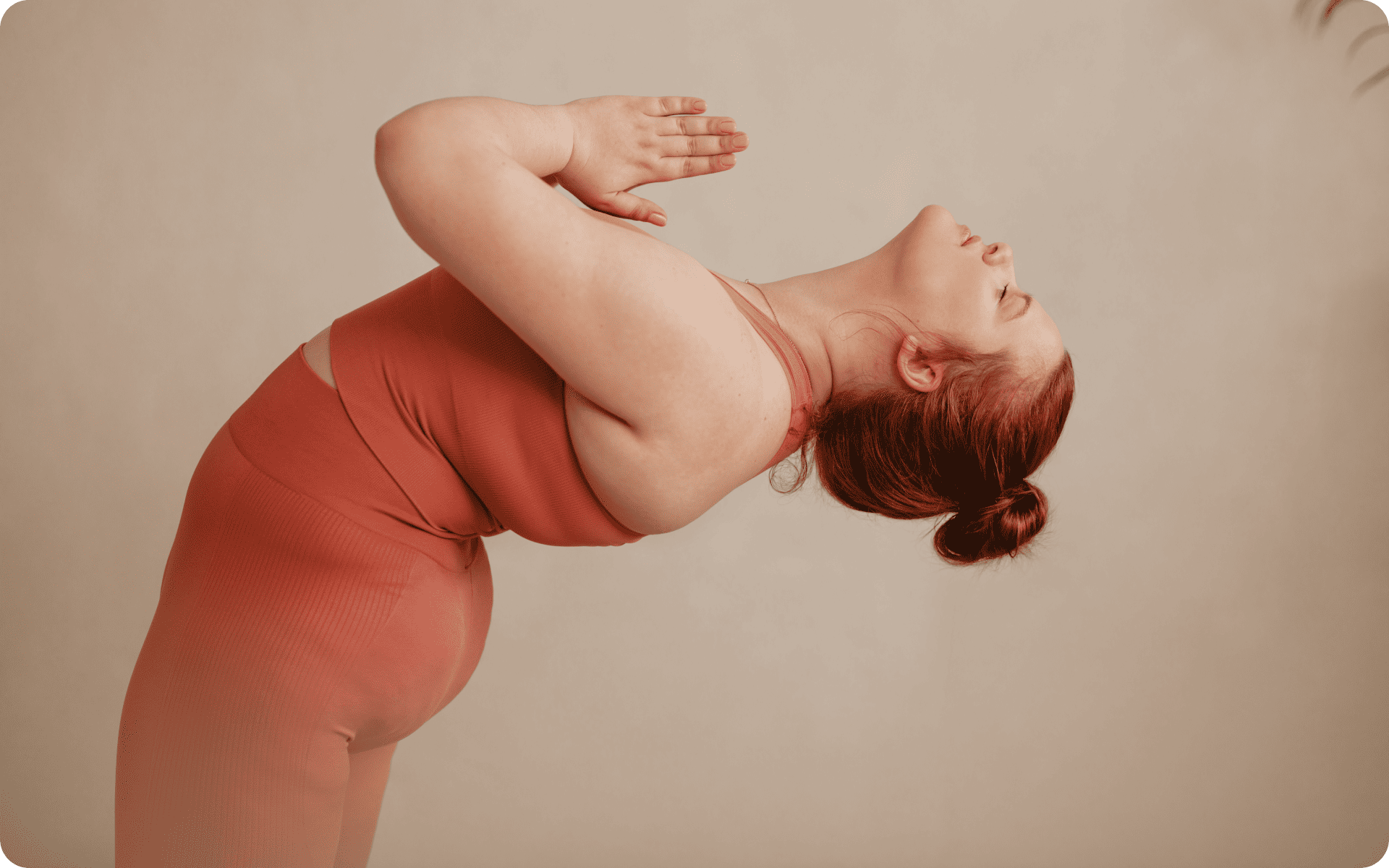Yoga is one of the biggest gifts humanity has been blessed with. Among the many forms of yoga, one form–Japanese Yoga is gaining immense popularity among the millennials.
As the name suggests, Japanese yoga is a meditative yoga that combines yoga postures, meditation, and breathing exercises with the elements of traditional Japanese and Indian yoga practices (8).
Like other forms of yoga, Japanese yoga is about establishing a peaceful mind-body connection. It isn’t about trendy gear but about timeless connection. It’s about feeling the earth beneath your tatami mat, the wind whispering through your hakama, and the breath flowing like a serene river within. It’s a practice that whispers, “less is more,” even in your workout wardrobe.
With the constant work pressures and daily chaotic routines, practicing yoga helps ensure peaceful and stress-free well-being. Let’s learn more about Japanese yoga, how to perform it, and its various health benefits.
What is Japanese Yoga Called?
Japanese yoga is also known as shin-shin-toitsu-do (unification of the mind and the body). Some other names for this practice are Okido Yoga and Meridian Yoga.
This practice originated in the 1900s when a Japanese martial artist, Nakamura Tempu, introduced it after combining the principles of Indian and Japanese traditional yoga (2). From both yoga practices, he deduced certain principles that focus on establishing a strong mind-body connection. Articulation of this practice was how Japanese yoga was born.
The most distinctive aspect of Japanese yoga is that poses and forms are tweaked with seasons. It focuses on different body parts according to seasonal fluctuations.
Japanese yoga uses meridian therapy like Chinese acupuncture and Zen shiatsu (4). It is important to understand what meridians are. Meridians are energy paths that run throughout our bodies. This branch of yoga has specific postures that focus on a particular organ or body part at a time. It allows us to connect with our inner body deeper by stimulating energy and helping us feel calm and relaxed.
With Japanese yoga we can realize our bodies’ true potential, understand our core nature, and use our minds and bodies naturally and in sync. Unifying the mind and body makes us feel easy and relaxed daily.
Yanking yourself back in shape has never been so easy with our game-changing fitness app! Start transforming your life with BetterMe !
Is Yoga A Thing in Japan?
Yoga has been a thing in Japan for a long time. Recently though, yoga has been gaining precedence not just in Japan but worldwide. In Japan, yoga centers are found on almost every corner. As of 2023, the number of yoga practitioners is estimated to be between 500,000 and 1 million, or 1% of the Japanese population (11).
But did you know that the women are more interested in yoga than the men? Yoga classes are usually offered in health clubs, private studios, regional community centers, and yoga centers around Japan. A yoga class, on average, lasts 90 minutes and is often pocket-friendly.
People perform yoga for multiple reasons. Some want to improve their health, some seek a meditative calm, while others wish to elevate their happiness and wave goodbye to stress. Considering these perks, it is not surprising that Yoga is gaining global recognition and acceptance.
What is the Japanese Kanji for Yoga?
Japanese kanji for yoga is 瑜伽. It is a loanword taken from the original Sanskrit and can be read as yuga or yoga in Japanese (10). Yoga can also be written as 瑜誐 or 遊迦. Its literal meaning is a yoke, union because it focuses on bonding an individual soul with a divine being or spirit.
What is Yin Yoga?
Yin and yang are popular concepts in Chinese philosophies, Confucianism and Taoism. Just like how yin and yang are opposites, so is the case with their performance. Yang-style yoga, such as ashtanga or vinyasa, focuses on muscles and is fast-paced, while yin yoga focuses on our deep connective tissues, fascia, and ligaments and is slow-paced (12).
These yoga practices require the practitioners to hold a particular asana pose before advancing to the next. Yin yoga makes us relax and tune into our inner selves. The concept of yang yoga is deeply rooted in Taoist principles. According to these principles, our bodies comprise Qi (energy), which flows throughout our bodies. This can enhance our flowing, circular movements and help connect with the body’s instincts. Yang yoga is more fast-paced and engages the muscles and cardiovascular system (13).
On the contrary, yin yoga is less about achieving perfect alignment and more about finding stillness. It allows the body to sink into a pose. You are encouraged to relax your muscles and let gravity do its work. By holding poses for longer periods, yin yoga can reach deeper layers of the body that are often neglected in other styles. This can improve flexibility, circulation, and joint health (9).
Read more: Yoga for Moms Who Need a Break: A Simple Guide
What Are the Benefits of Japanese Yoga?
Japanese yoga benefits the mind and body and offers multiple health benefits. The advantages compel most people to make this a part of their routines (9).
Here’s a sneak peek into some of its perks:
Relaxes the Mind and Body
The biggest benefit of Japanese yoga is that it is slow-paced and meditative. It can relax our minds and bodies, helping us to de-stress and unwind at the end of the day (5). This eventually brings mental clarity and relieves inner stored tensions.
Improves Flexibility
Yoga exercises can strengthen and loosen the body. Regular yoga practice can allow you to overcome muscle tightness and move around freely (1). This is particularly beneficial for older adults with limited mobility.
Treats Physical Discomfort
You don’t have to be suffering from some illness to try yoga. Working daily and spending hours at the desk can cause back pain, headaches, or strain.
Performing yoga, particularly Japanese yoga, focusing on different body parts, can be helpful. It can relax and loosen our dormant muscles. Practicing this form of yoga improves muscle strength and can help you overcome physical pains and fatigue (14).
Performing Japanese yoga strengthens our internal organs and makes them resistant to physical ailments in the future.
Brings Mental Clarity
Japanese yoga focuses on deep and controlled breathing by holding certain poses for some time. This can help you to ditch the troublesome thoughts for a few minutes. Distracting from worries can help you be more optimistic and capable of dealing with them.
Improves Blood Circulation
Shin-Do, a traditional Japanese bodywork, stimulates pressure points and meridians. Although the scientific evidence is limited, some practitioners have reported improved blood circulation. Similarly, gentle stretches associated with Zen Buddhism can promote blood flow with gentle muscle engagement (13).
What Are the Core Principles of Japanese Yoga?
Japanese yoga is based on four core principles to work the unification of mind and body (shin-shin-toitsu-do) (3).
These are:
Positively Use the Mind
The first principle focuses on self-awareness and self-affirmation. It is about examining ourselves and analyzing our life’s purpose and interactions with others. This can lead to self-discovery, allowing us to live in the moment and stop worrying about the past or future.
Use the Mind with Full Concentration
The second principle is to use our minds purposefully. It is about performing a self-analysis and setting our priorities. The crux of this principle is to concentrate and focus on the things most important to us, then move on to the lesser ones, and keep doing so in descending order until we reach the things of least importance to us.
Use the Body Naturally
The third principle is to use our body naturally. This means not overstressing ourselves and performing simple and light exercises gracefully. These are easy exercises that don’t rely on much equipment.
Train the Body Systematically.
The fourth principle is to continuously train our bodies to be patient and not rush into anything.
Remember that these are general principles. Specific practices within Japanese Yoga may have their nuances. When exploring this domain, consider your specific interests and seek qualified instructors who can guide you according to your personalized needs.
If you wish to cinch your waist, tone up your bat wings, blast away the muffin top – our fitness app was created to cater to all your needs! BetterMe won’t give excess weight a chance!
What are Japanese Yoga Exercises?
Japanese yoga is an intense and active form of yoga. It also includes modern exercises and some elements of martial arts. If you are looking into Japanese yoga for beginners, know it focuses on practicing positive affirmations, meditating, and self-healing (15).
Here are a bunch of exercises that you can try out if you wish to explore Japanese yoga exercises:
Autosuggestion
Autosuggestion is the core concept of Japanese yoga. It is also known as Jiko Anji and is the process of practicing positive suggestions or affirmations to replace negative thoughts and limiting self-beliefs in our subconscious minds.
According to Nakamura Tempu, our minds are the most prone to suggestions or thoughts before sleep. With this in mind, he taught his students to hold a hand-held mirror and speak a positive word or thought to themselves before going to sleep. The process is followed after waking up and repeating a few times throughout the day until you let go of all negative thoughts.
Meditation
Meditation, particularly dynamic meditation, is a fundamental concept in Japanese yoga. It is about incorporating many elements, such as practicing proper postures, deep breathing, and focusing on our inner selves. It comprises the Muga Ichi-nen and Anjo Daza Ho meditations of sight and sound.
Dynamic meditation is about practicing self-awareness and focusing on improving our lives. It uses autosuggestions by utilizing visual techniques to improve mental clarity on a mental level.
On the physical level, it focuses on maintaining a good posture and calming our muscles by incorporating light stretches. To practice the Anjo Daza Ho, sit on your feet and place your hands in your lap with your index fingers touching your thumbs. Close your eyes and gaze into the flame of a candle.
To practice the Ichi-nen, sit on your feet and place your hands in your lap with your index fingers touching your thumbs. Close your eyes and focus on the sounds of the ringing bell.
Self-healing Exercises
Hitori ryoho, or self-healing exercises, focuses on healing and relaxing our physical bodies. They cover the back, shoulders, arms, legs, face, and eyes and focus on improving blood circulation, relaxing our muscles, and enhancing flexibility.
To do a self-healing exercise, place your right palm on your navel and cover it with your left hand. Move your hands in a clockwise motion gradually. This improves blood flow and digestion.
Another self-healing exercise is to lift your left arm above your head without lifting your shoulder and letting it fall downward and then up again in an oval-shaped rotation. Do this exercise until you feel your shoulders loosening and your blood pumping. Repeat the same with your other arm. This helps relieve shoulder tension and knots in the upper back.
Psychophysical Exercises
Yodo ho, or psychophysical exercise, incorporates physical and meditative exercises to have a healthy mind and body. These exercises may be practiced sitting, squatting, standing, or reclining.
These exercises could be beneficial for mothers. It has rhythmic movements that help improve blood circulation, digestion, spine alignment, posture, and balanced energy distribution in the body.
Read more: Somatic Yoga: A Journey to Self Discovery
How is Japanese Yoga Different from Traditional Yoga?
This pressing question you may have in mind regarding Japanese yoga.
Well, for starters, you don’t stick to the same pattern or style in Japanese yoga as you may do in other forms of yoga. That’s because Japanese yoga follows the different seasons (7).
Yoga in summer is different from what you can do in winter. Japanese yoga is practiced on different body parts, so the movement is sometimes different.
It focuses on our meridians, just like in Chinese acupuncture. Our body comprises 12 meridians. Yin meridians of the arm comprise the heart, lungs, and pericardium. Yang meridians of the arm comprise small and large intestines. The yin meridians of the leg focus on the liver, kidney, and spleen, whereas the yang meridians focus on the urinary bladder, stomach, and gallbladder (6).
Who Can Practice Japanese Yoga?
The best aspect of Japanese yoga is that anyone can practice it as long as they are not suffering from serious physical ailments or limitations. Some physicians may also recommend yoga for health because it is holistic. Other forms of yoga, like somatic yoga, may also be advised to individuals after assessing their physical health.
Individuals looking to relieve stress must practice it regularly. Beginners should also start their yoga journey with Japanese yoga, as it is slow-paced and allows us to focus on each body part carefully.
This helps beginners get a grip on their yoga poses and improve their posture. Another good thing about Japanese yoga is that it can be practiced by old adults who may find it difficult to perform other traditional forms of yoga as the poses could be faster-paced. This may improve mobility and flexibility in older adults.
What Are Some Limitations of Japanese Yoga?
Like any form of wellness practice, Japanese yoga also has some limitations. For instance, it is deeply rooted in Japanese culture and philosophy. This may limit its relevance for individuals from different cultural backgrounds. Also, it has a standardized approach compared to diverse practices found in Indian yoga.
Some forms of yoga have been adapted to integrate with modern scientific principles and evidence-backed practices. Japanese yoga may not be as explicitly aligned with the scientific approaches to health and well-being. Some forms of Japanese yoga incorporate elements from martial arts. Even though this can be appealing to individuals interested in both yoga and martial arts, it may not be suitable for everyone, especially those looking for a more gentle or meditative practice.
How Do You Choose the Ideal Japanese Yoga Class?
Knowing the health goals and different Japanese yoga styles can help you to choose the best class for yourself. Some classes may be suitable for beginners, while others are more advanced. Select a class that matches your current skill level to have a positive learning experience.
Many studios offer trial classes or introductory sessions. Take advantage of these opportunities to get a feel for the class environment, teaching style, and whether it aligns with your preferences.
Other Yoga Styles to Try
Japanese yoga can be your gateway into a new fitness realm. Nonetheless, if you wish to diversify and try new methods, you can sign up for other yoga styles, such as
Yin Yoga
Yin yoga is a slow-paced meditative yoga targeting our deep connective tissues and holding a particular pose for a few minutes. It is based on Chinese philosophy and can help you destress, calm down, and feel light.
Hatha Yoga
Hatha yoga, which is an Indian yoga tradition, is a fast-paced yoga that many individuals practice worldwide. It has several two-person yoga poses and asanas with breathing techniques to maintain energy and improve flexibility.
Vinyasa Yoga
With its Indian roots, Vinyasa yoga is even faster than hatha yoga and requires smooth transitioning between asanas. It is ideal for losing weight and maintaining fitness.
How Much Japanese Yoga Should One Do?
When discussing the types of Japanese yoga, many individuals also wonder how much effort they should put into yoga. Know that the frequency depends on the type of yoga they choose. The outcomes depend on personal efforts and consistency.
For beginners, it might be better to perform Japanese yoga at a lower frequency initially. This can help them to gain momentum and get into the routine. As they progress, they can do yoga 5-6 times a week as per ease.
Another question you may have is the duration of a Japanese yoga session. Some believe that daily practice matters more than the length of the session, whereas others have the opposite view.
Not everyone has time to do an hour-long yoga session. If you are a starter, your focus must be getting accustomed to the practice. Focusing on what works best for you and how you feel comfortable would be best.
If you can’t find an hour to dedicate to yoga, you may opt for a flexible schedule. For instance, you may do 15-20 minutes of yoga daily and extend it to 30 minutes on the weekends. As you get used to it, you may find it easier to do yoga, so you may easily do an hour of Japanese yoga daily. The key is consistency. Even if you manage 15 minutes of yoga, you are at least working your muscles and enhancing your flexibility.
The Bottom Line
Japanese yoga is a distinct path to holistic well-being. It is a striking combo of meditation, mindfulness, and gentle movements. This ancient practice, deeply rooted in Japanese culture and philosophy, transcends beyond physical exercise. It forges a path to inner peace and harmony between mind and body.
If you are new to Japanese yoga, taking beginner classes under the supervision of an expert, Yogi is advisable.
DISCLAIMER:
This article is intended for general informational purposes only and does not serve to address individual circumstances. It is not a substitute for professional advice or help and should not be relied on for making any kind of decision-making. Any action taken as a direct or indirect result of the information in this article is entirely at your own risk and is your sole responsibility.
BetterMe, its content staff, and its medical advisors accept no responsibility for inaccuracies, errors, misstatements, inconsistencies, or omissions and specifically disclaim any liability, loss or risk, personal, professional or otherwise, which may be incurred as a consequence, directly or indirectly, of the use and/or application of any content.
You should always seek the advice of your physician or other qualified health provider with any questions you may have regarding a medical condition or your specific situation. Never disregard professional medical advice or delay seeking it because of BetterMe content. If you suspect or think you may have a medical emergency, call your doctor.
SOURCES:
- 1. Flexibility Assessments and Exercise Programming for Apparently Healthy Participants (n.d., acsm.org)
- History of Japanese Yoga and its Benefits (n.d., newbodyphysio.com.au)
- JAPANESE YOGA (n.d., affordablefitness.net)
- Japanese/Ki Yoga (n.d., yourpinnacle.com.au)
- Restorative yoga for occupational stress among Japanese female nurses working night shift: Randomized crossover trial (2019, pubmed.ncbi.nlm.nih.gov)
- The Influence of Buddhist Meditation Traditions on the Autonomic System and Attention (2015, ncbi.nlm.nih.gov)
- Ultimate Guide to Japanese Yoga (2022, japanswitch.com)
- What is Okido Yoga (2023, yoganic.com)
- What Is Yin Yoga? (2022, webmd.com)
- What does Yoga mean? (2013, japanthis.com)
- Yoga and Yoga Therapy in Japan (n.d., iayt.org)
- Yin Yoga 101: Everything You Need to Know About This Deep, Meditative Practice (2020, mindbodygreen.com)
- Yin Yoga: Restoring Balance and Unleashing Your Body’s Vital Energy (2023, ventsmagazine.com)
- Yoga to Make You Strong (2018, nytimes.com)
- Yogoda Exercises (n.d., woman.thenest.com)
